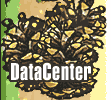The Huntington Center Green is the focal point of Huntington Center, a village within the town of Shelton. It is a long green oriented on a north-south axis and situated between Huntington Street on the east and Church Street on the west, both one-way streets with traffic going in opposite directions. Route 108 approaches the green from the west and cuts across it to join Huntington Street on the other side. Vestiges of the original common can be seen beyond the southern tip to the east of Huntington Street for some distance. Located on a ridge, the area to the north and east of the green slopes sharply downward behind the buildings facing the green on these two sides. The green itself slopes from the west side to the east side.
It is divided into three parcels and only the northern portion owned by the town is actively used as the green. The middle section is a cemetery owned by St. Paul's Church, upon which the church is situated. The long and narrow southern piece is also owned by the town and used as the site for the fire station.
The northern parcel is rectangular in shape and shaded mostly by mature deciduous trees randomly planted throughout. A brick path diagonally crosses the green from the northeast to the southwest corner. The focal point is an octagonal-shaped bandstand located near the center and to the east of the path. The bandstand is surrounded by a brick path and on either side is an octagonal-shaped brick pad level with the ground. To the northwest of the bandstand and on the other side of the path is a small circular area defined again by bricks that contain a World War Two memorial (1950). The names of the local veterans are on a bronze plaque which is inlaid in a large rectangular-shaped stone set upright. It used to be the steps of the old town hall. A large clock on a cast iron standard is also within the circle, as well as a flagpole. A late 19th century memorial water trough planted with flowers is located almost on the road at the intersection of Huntington Street and Route 108. The case iron trough, donated by Julia DeForest in honor of her father, Charles Curtiss, is not on its original site. A ring of six mature trees near the southern end provides shade for people who linger at the picnic tables within the circle. There are several large bare spots that lack grass and a couple of flower beds that need maintenance. No curbs protect the edges of the green.
The picturesque center parcel separated from the green to the north by Route 108 is a burying ground that contains headstones that were erected between 1740 and 1880. It is surrounded by many mature coniferous trees and a metal fence. At the northeast corner is St. Paul's Episcopal Church (1812), dramatically sited at the corner of Route 108 and Church Street with its center projecting bay and steeple facing west.
The narrow, diamond-shaped northern parcel is dominated by the large contemporary brick firehouse built in what is supposed to be the Colonial Revival style so it will blend with the historic character of the district. Its size prevents that from happening. It is situated on the site of the old town hall and faces north. A good portion of the parcel is covered with an asphalt parking lot situated in front of it. The lot is almost bare, planted with only a few small trees. Just south of the parking lot is a flagpole and a memorial (1968), a boulder with a bronze plaque honoring "Brother firemen who have passed away."
Residential, religious, civic and commercial buildings surround the green. Most of the historically significant buildings are located on the west side and north end and are associated with the Congregational Church (c. 1890) and the Episcopal Church across the street. This includes the oldest building in the district built in 1734 at the north end of the green. The second meetinghouse was erected on the present site of the power transformers next to the house. They are screened from the street by trees. Not too far south from this site, also on the west side of the green, is a house built in 1770 that was also used as a parsonage and a boys school. In the same tradition, across the street from the cemetery on the west side is the Huntington school, a large brick building constructed in the early 20th century with a 1950s addition. It has been converted to a community center and is the focal point of activity on the west side of the green.
The historic character of the green has been seriously compromised by the strip of 20th century commercial buildings on the east side that are readily visible from the west side because of the sloping terrain. These buildings include a gas station, super market, pharmacy and office buildings. They are set well back from the street and surrounded by asphalt to accommodate vehicular traffic.






![]()